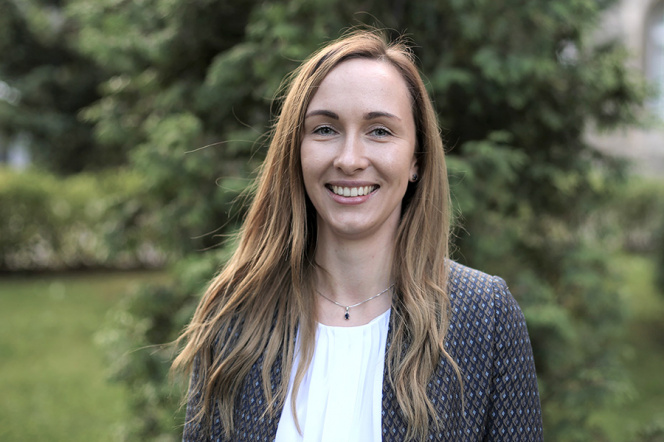Date added: 2021-10-04
Towards even better personalized bone implants

– 3D printing is not something new anymore, while some research areas are still undiscovered. Looking through the prism of the pandemic, researchers who deal with 3D printing have significantly contributed to the support of medics, for example by printing fragments of helmets or mask connectors. Based on these experiences, I thought that it would be worth checking how the material we print behaves under the influence of sterilization, i.e. a method that allows the destruction of bacteria and viruses, and how its strength changes – says Angela Andrzejewska, PhD from the Department of Strength of Materials at the Faculty of Civil and Environmental Engineering at Gdańsk Tech.
Research project of PhD, Eng. Andrzejewska focuses primarily on the use of materials for filling cavities in bones.
– In many cases, when due to for example cancer, a bone fragment has to be removed, a transplant is taken from another part of the body and the missing fragment, e.g. of the jaw or skull, is completed with it. The 3D printing technology allows us to print various shapes depending on the needs, e.g. a specific bone. If we print a missing fragment of a bone after cancer resection and want to implant the material that will integrate with the bone tissue and then rebuild cells over it, it must first be sterilized so as not to introduce unnecessary microbes into the body – explains the researcher. – My project is to see how sterilization methods leading to the sterilization of the material can damage the 3D printed structures. Based on the results obtained, it will be possible to develop recommendations for the optimal sterilization of three-dimensional printed elements, e.g. bone fillings.
An additional factor that PhD Andrzejewska will investigate as part of the projects to check how the sterilized material changes under the influence of the aquatic environment.
– The experiments I conducted earlier, comparing the degradation of polymer materials produced in a fairly common injection technology with those produced by means of 3D printing, show that - despite the similar initial mechanical strength – the degradation processes are slightly different – says the researcher. – Depending on the type of polymer materials used, they will be suitable for more or less loaded structures. Therefore, not all of them will be suitable for filling bones that carry heavy loads or to the spine, but rather for example as filling bone cavities under the teeth.
The researcher emphasizes that her cooperation with modern dental clinics in the field of additive technologies has shown in which way 3D printing can develop.
– On the one hand, these will be biodegradable polymers that are able to integrate with the bone and rebuild it, and on the other hand, ready-made fragments of implantological reconstruction – says Angela Andrzejewska, PhD. – I hope that the research project that I am implementing in a short time will bring tangible benefits for the society. Medical engineering is what it comes down to, helping people.
The project entitled "Assessment of the impact of selected sterilization methods on changes in the mechanical behavior of porous structures shaped by melt deposition techniques from hybrid polymers and subjected to hydrolytic degradation in simulated conditions" is financed under the MINIATURE 5 program of the National Science Center.

